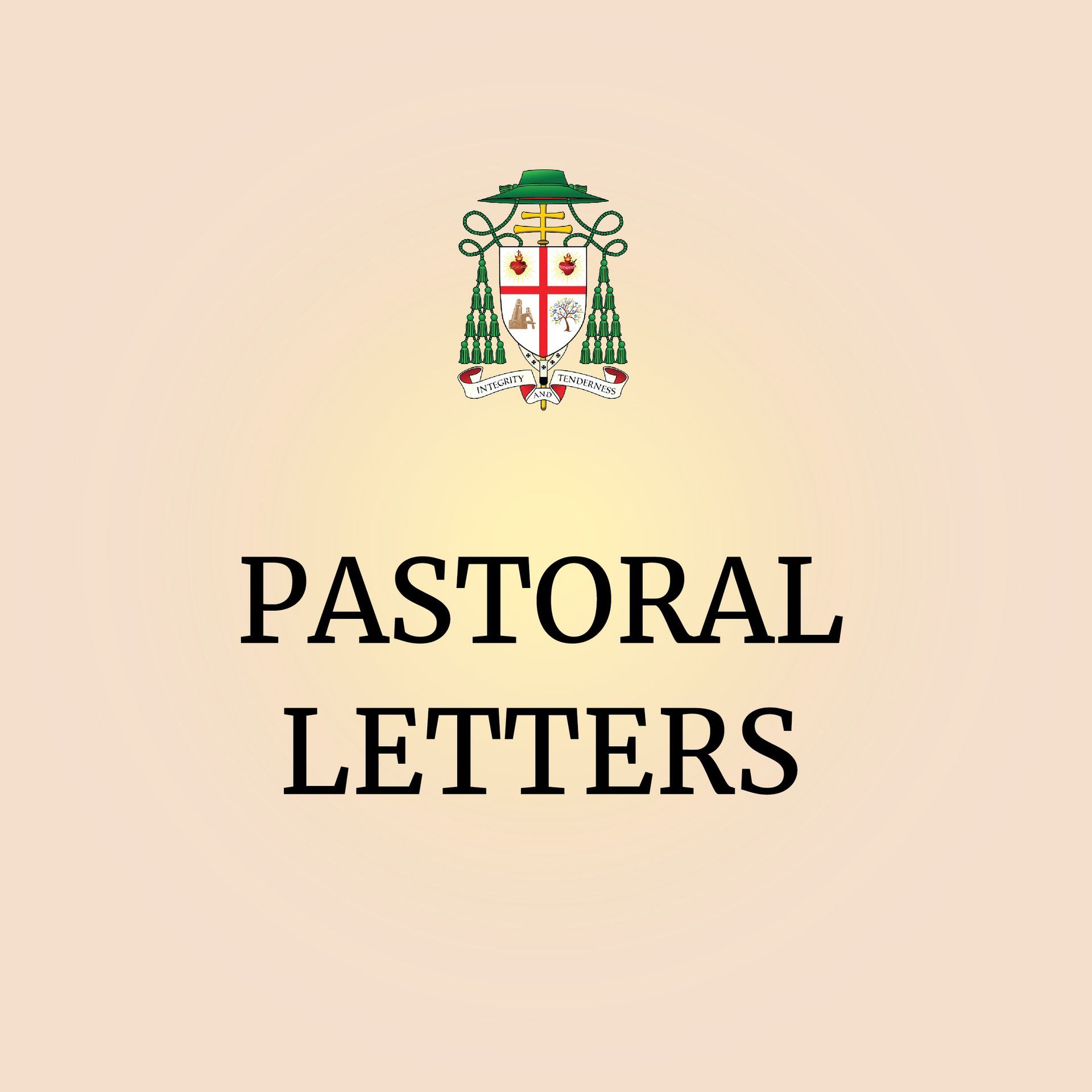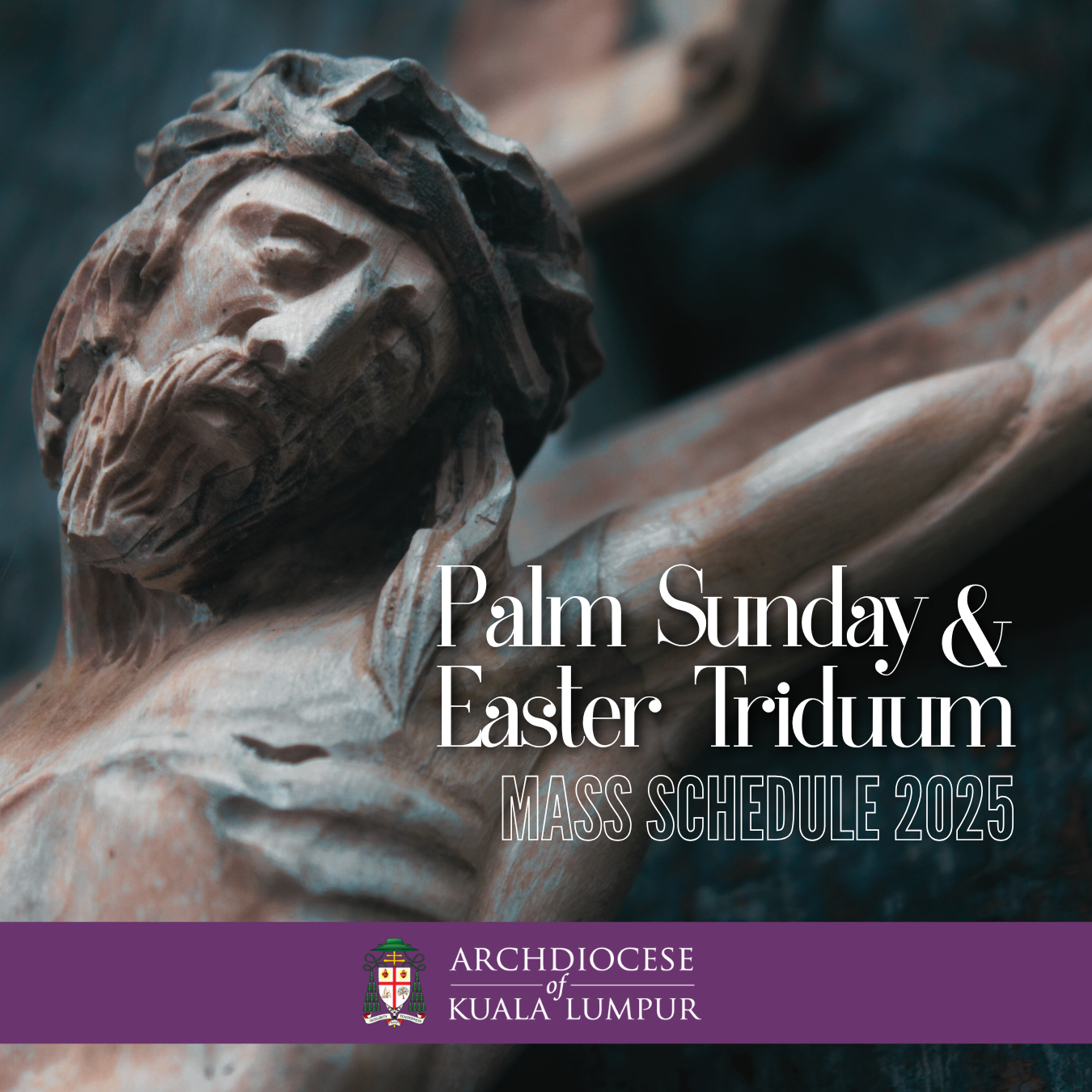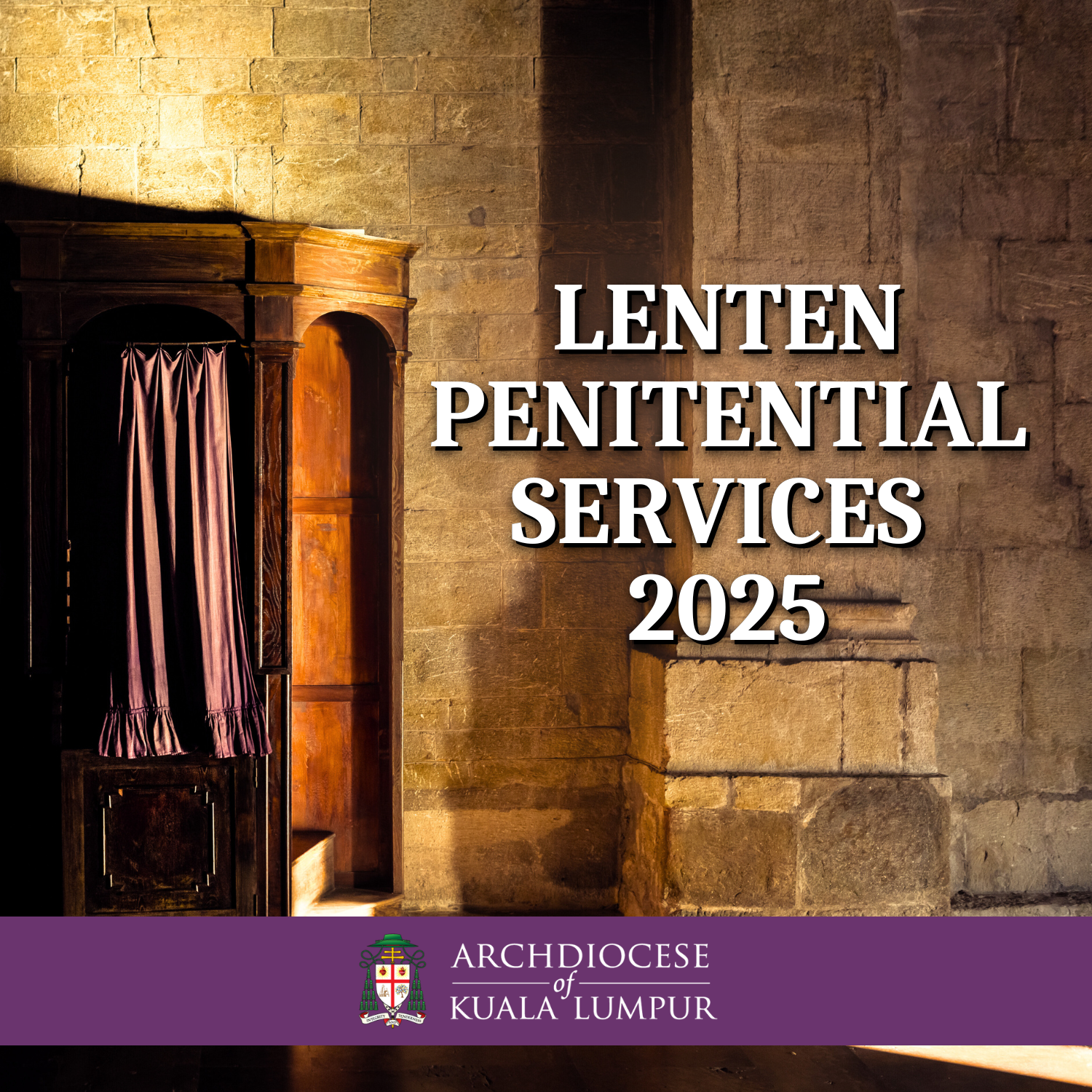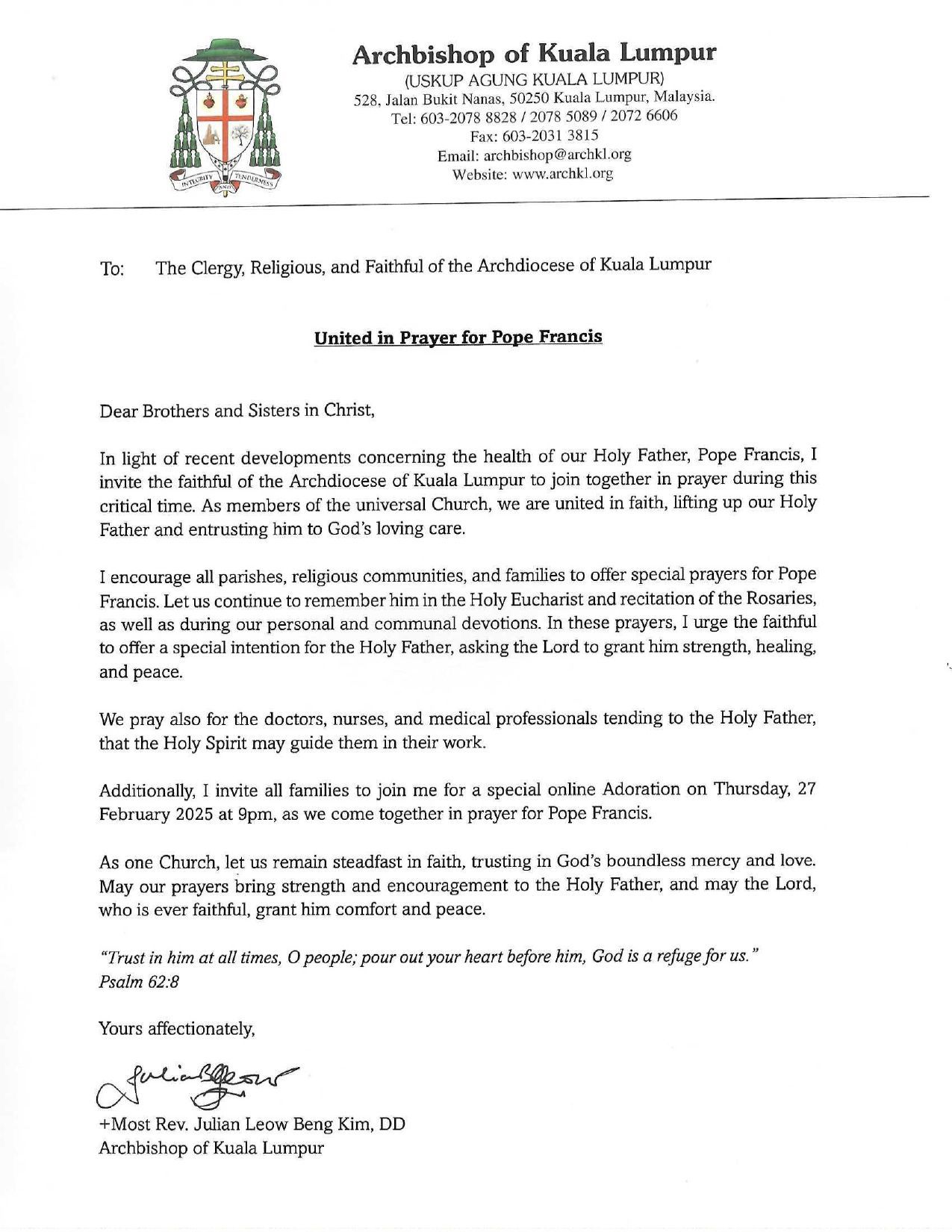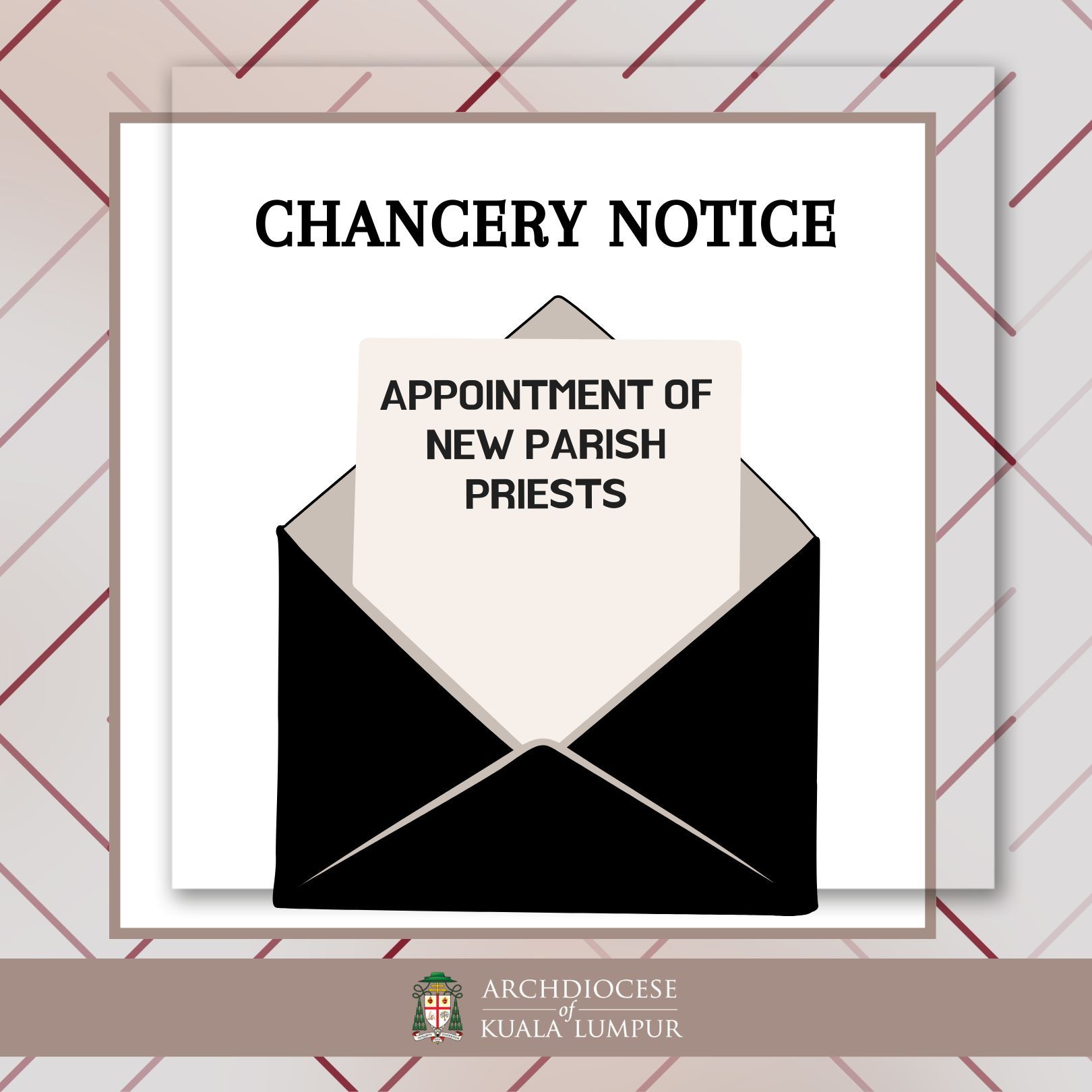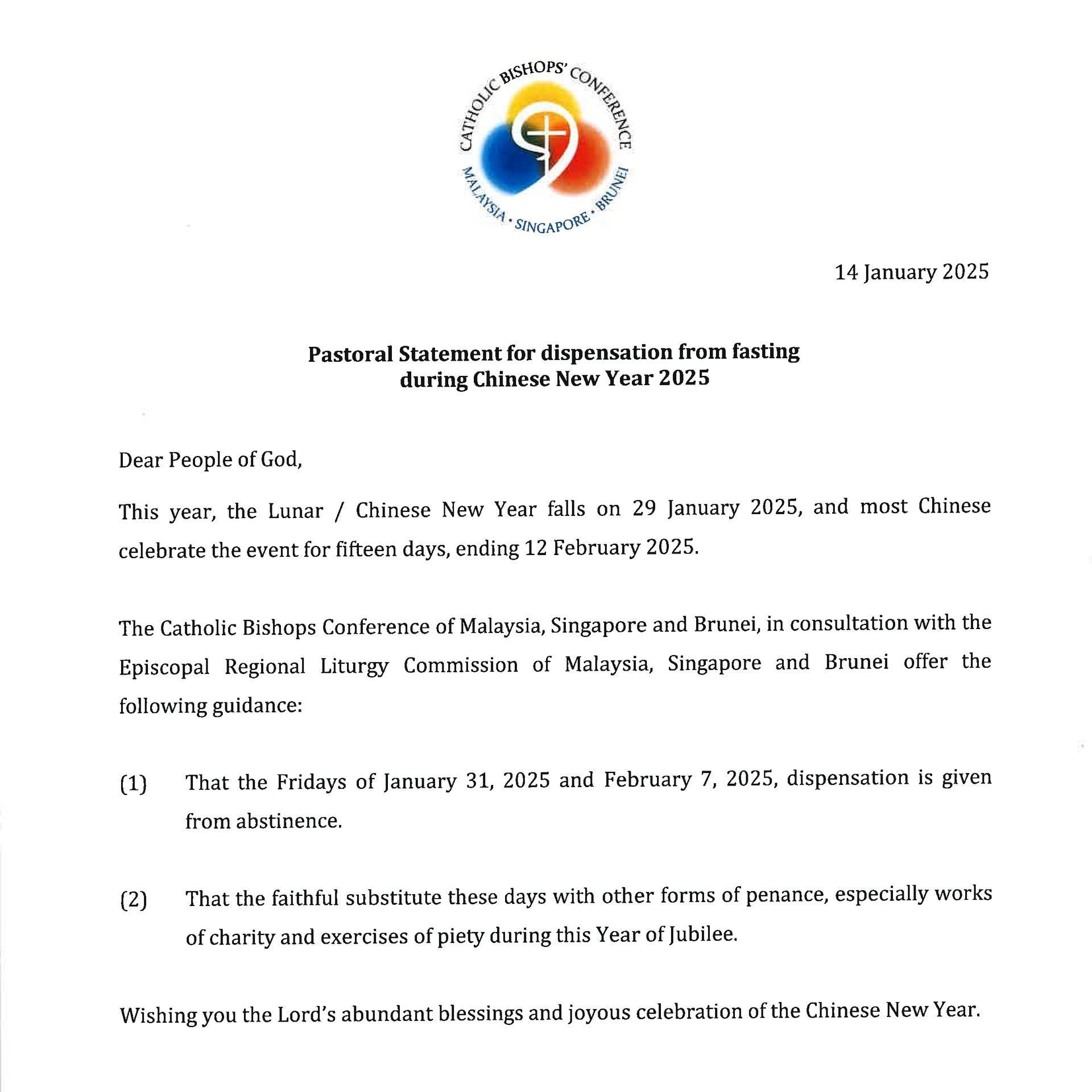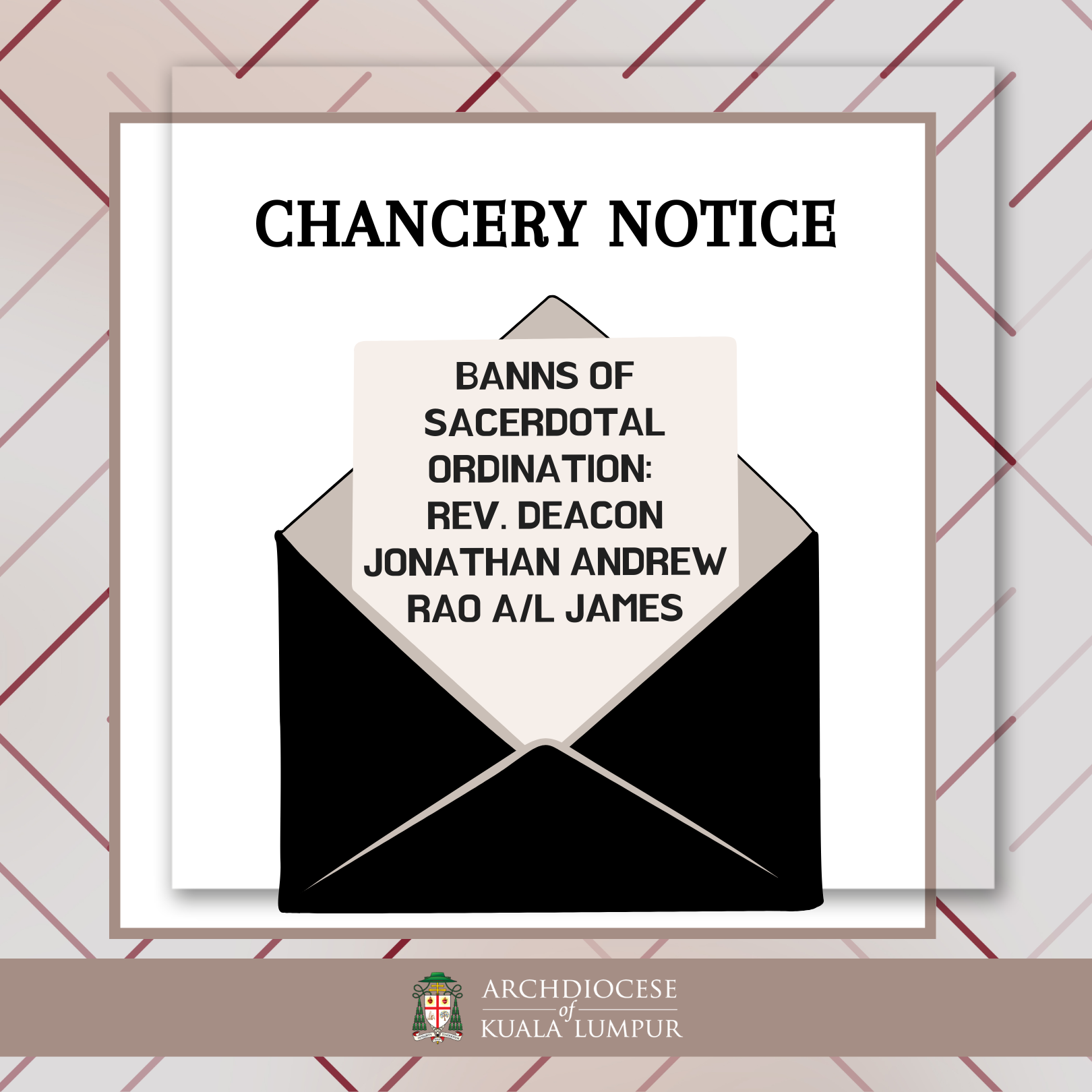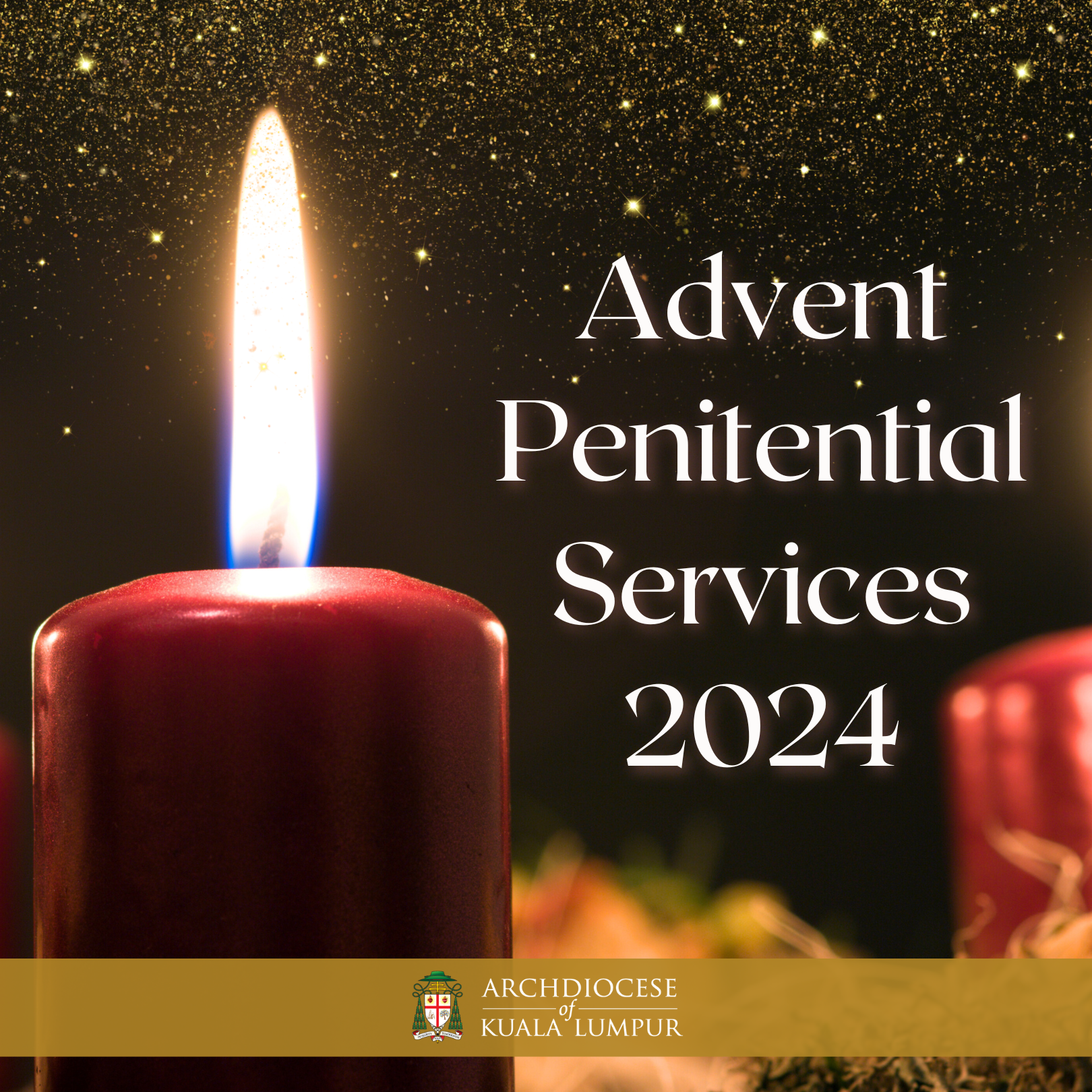6 August 2024
PAPAL MASS INVITATION
The Archdiocese of Kuala Lumpur has received an additional allocation of 100 seats to attend the Papal Mass with His Holiness Pope Francis on 12 September 2024, at the National Stadium in Singapore.

Kindly read the requirements before registering.

Please note that the link will only be open on Wednesday, 7 Aug 2024 at 8:00AM.
Click the link here to register:
https://bit.ly/3Afbxq8
More posts

